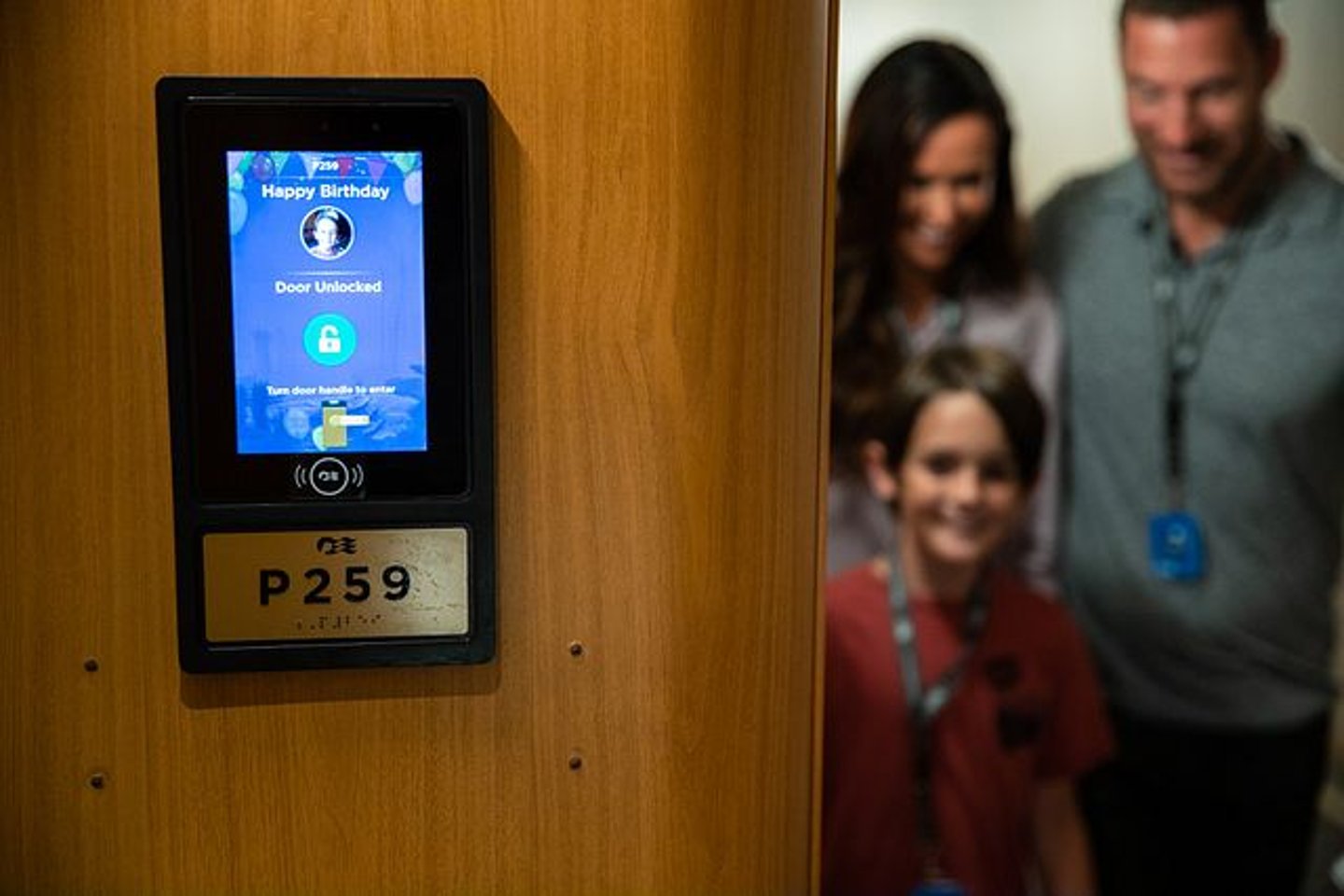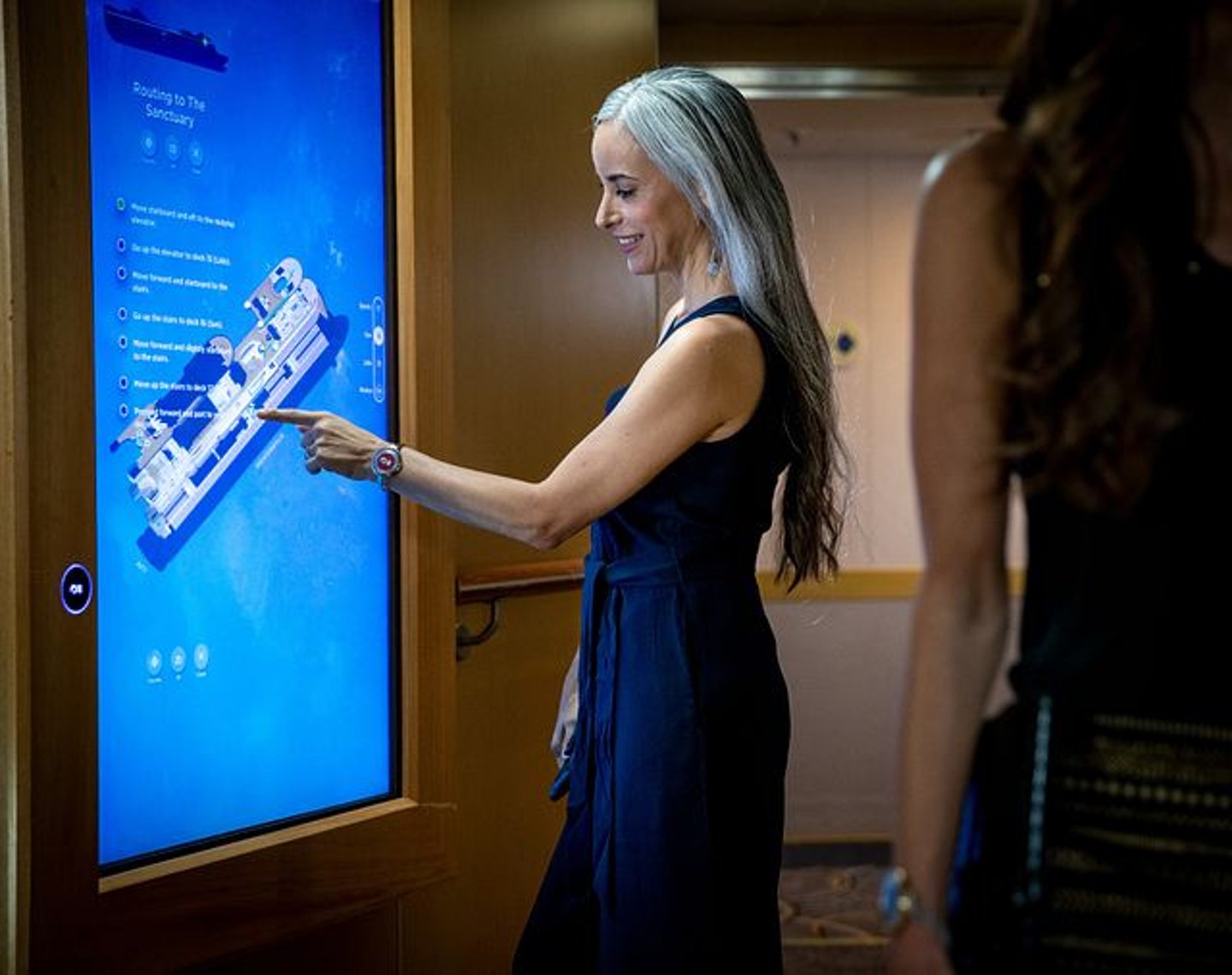Carnival's OceanMedallion Tech: The Wave of the Future
John Padgett, Chief Experience and Innovation Officer at Carnival Corp., started working on the technology that would ultimately inspire the OceanMedallion while he was employed at another company famous for its ability to give consumers world-class experiences: Walt Disney Parks and Resorts.
“Magic Kingdom is one of the best experiences in the world, but it’s a commodity experience. Everyone who pays to go there gets the same experience,” Padgett says. “And there was a tremendous amount of complication. Guests needed tickets, fast pass tickets, meal coupons, vouchers, etc.”
So, Padgett set out to offer guests a truly personalized experience that would also eliminate some of that friction. That’s when Padgett and a highly-focused team created the MagicBand.
“When I envisioned the MagicBand, the wearable category didn’t even exist yet and the iPhone 1 was just being released. It ultimately solved half of the original problem -- it eliminated friction and simplified the experience, which made it incredibly popular with guests, but it did not achieve the original vision of creating a unique experience for every single guest,” Padgett explains.
It wasn’t until Padgett started working at Carnival that he was able to achieve his goal. Key to his success: the closed ecosystem of each and every cruise ship.
“To do personalization at scale, you have to have an incredible amount of real-time intelligence,” he says. “Why? Because to deliver true personalization, we need the information the guest is creating in that very second to be reinvested in their experience that very same second. We want our guests to interact with our crew and our ship on a personalized basis that is informed in real-time by who they are and what their needs, wants and desires are that very same second.”
Where though does that real-time intelligence come from?
How the Magic Happens
Unsurprisingly, the Medallion is just the iconic element of a vast network of readers and sensors embedded across the ship that interact instantaneously with the two microscopic antennas (one NFC and one BLE) inside each guest’s OceanMedallion. Just how vast is this network? Each ship contains 72 miles of cable, 6,000 sensors, 650 readers, 500 edge computing devices and more than 4,000 interactive portals.
The resulting intelligence is associated with each and every guest in real time to fuel Carnival’s Experiential Internet of ThingsTM (xIoTTM) network which facilitates experiences for guests based on location, personal information they provide and onboard interactions.
Padgett often uses the term “fully connected” when referring to the guest experience. But what does this actually mean? According to Padgett, it means that the guest is connected to the ship environment itself, the crew, other guests (by choice) and – importantly – the internet. Providing fast, affordable and reliable high-speed internet on a cruise ship, however, is no small task. Especially when guests expect the same connectivity levels they’re used to having at home.
To ensure guests have access to incredible WiFi, Carnival partnered with SES to leverage their hybrid medium earth orbit (MEO) and geostationary (GEO) network of satellites. The MEO satellites are especially important because they reside closer to Earth and thus the signals have less distance to travel.
“Historically, cruise ships have been plagued by latency. It takes 0.6 seconds for the signal to go up to the satellite and 0.6 seconds for it to come back down. That delay compounded across unlimited internet interactions is very annoying to our guests who are used to modern-day connectivity. With MEO satellites we effectively eliminated any latency. Of course, our WiFi access points, switches, modems, satellite antennas, and the satellites themselves have all been optimized to work in the best possible way, too,” Padgett adds.
Why Guests Keep Returning
As all of this technology and data works together in real-time, guests are provided with a best-in-class experience. For instance, prior to arriving at the embarkation port, guests are asked to download the MedallionClass app. Within it, they upload their passports and other travel documents among other things. Then when guests arrive, they don’t have to check-in at a front desk or wait in long lines to board the ship. That information, among other things, is also available via the OceanMedallion. Similarly, when the guest approaches their stateroom door, the door automatically unlocks and greets the guest by name via a digital display. (If the guest is celebrating a birthday, anniversary or other special occasion, the digital display will reference that as well.)
Accessible via guests’ smart devices and on portals throughout the ships, OceanCompass leverages the Medallion to easily locate and chat with friends and family on board, as well as enables point-to-point wayfinding throughout the ship. OceanCompass guides guests throughout their journey, providing directional information so they can seamlessly navigate to their travel companions or their next point of interest. Guests can order merchandise, services, F&B on demand anywhere on the ship and have it delivered to them, wherever they are. Additionally, these purchases throughout their voyage are seamlessly charged to the guest’s folio because of the Medallion’s proximity and crew’s ability to confirm identification via frictionless, two-factor authentication. No swipes, taps, pin codes or signatures needed. And when guests approach crew members, the crew is aware of the guest’s name and preferences which helps to personalize their interaction.
What makes this experience different from other travel experiences is that the MedallionClass Experience is not technology-focused, Padgett says, but is technology-driven. Instead of requiring guests to engage in the technology, they can be engaged in the cruise experience while the technology empowers and enhances the experience completely behind the scenes. Guests are not required to switch between mediums such as key cards, to printed pages, to mobile app. Additionally, the MedallionClass Experience is not smart device dependent. Experiences are also easily accessed using portals throughout the ship, through crew members as well as via stateroom TV.
“The reason why we have a wearable is because of the value of universal individual connectivity which creates so much intelligence we’re able to personalize each guest’s experience,” Padgett notes. “Could we do this in other ways. Absolutely, but they all put complication back on the guest or on the operator.”
While the guest experience is certainly the top priority, this intelligence allows for so much more to take place. It drives advantages in the crew experience, capacity utilization, and space allocation. It provides options to enhance security and health processes, and is beginning to aid in environmental and sustainable HVAC control. Most importantly, the same intelligence drives everything and enables the entire ecosystem to work more harmoniously, Padgett says.
“In the traditional world, all of this data would be siloed by department according to where it was collected and for what purpose,” he adds. “Other organizations work futilely to get that siloed information to reconcile and sync. And what makes it difficult to get these silos to work together is that they can’t agree on the information base. But if all of your intelligence is generated at the same time, comes from the same source, and is generated in real-time – there is no conflict in understanding it. This allows operators to act versus debate."
Employees: A Top Priority
Part of the beauty of the OceanMedallion, and the technology behind it, is that it not only improves the guest experience but also the employee experience as well. This was deliberately baked into Padgett’s strategy for a very important reason.
“If you make the staff’s job easier, it ensures immediate adoption by the consumer,” he notes. “If you make something great for the consumer but horrible for the employee, the employee will tell the consumer not to like it. So, your number-one priority must be to make the technology great for the employee.”
Not only do you make staff members happier when their job is easier, you also increase labor efficiency. And on a cruise ship, that’s “huge,” explains Padgett. While hotels do have costs associated with labor, that person isn’t a factor in revenue loss. However, on a cruise ship, only a specific number of “souls” are allowed to be on board at any given time. So, the more staff you have, the less guests you have and the less revenue-generating potential is available.
“If we can make the entire labor base more efficient, that allows more guests to sail on that ship and then everyone wins: guests are happier and ships are more profitable,” he adds.
OceanMedallion helps staff members in a wide variety of ways. It eliminates queuing, which frees staff from the headache of long lines and lots of paperwork and instead allows them to greet and mingle with guests during boarding. It ensures that housekeepers are “invisible” and never intrude accidentally on guests when they’re in their cabin. It eliminates lines at the bar and frustration among guests who can’t quickly and easily get their drink. And it even helps the captain of the ship locate missing persons in milliseconds.
Accomplishing this technological feat, however, requires some blood, sweat and tears along the way. “Nothing good comes easy,” as the saying goes. As the years have gone by, Padgett has discovered a way to put together a team that pulls unitedly as one to reach these innovative goals. In Part 2 of this series, we’ll learn not only how these business strategies differ from other corporations and why they’ve worked so well for him, but also why the Princess brand isn’t worried about cruising in a post-COVID world.






